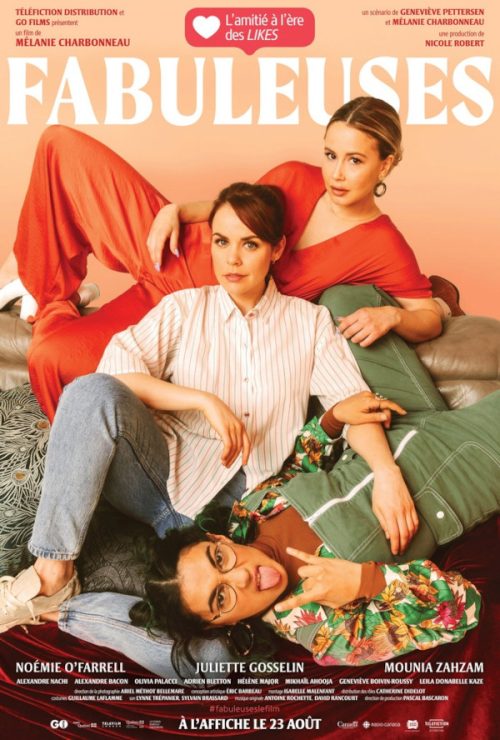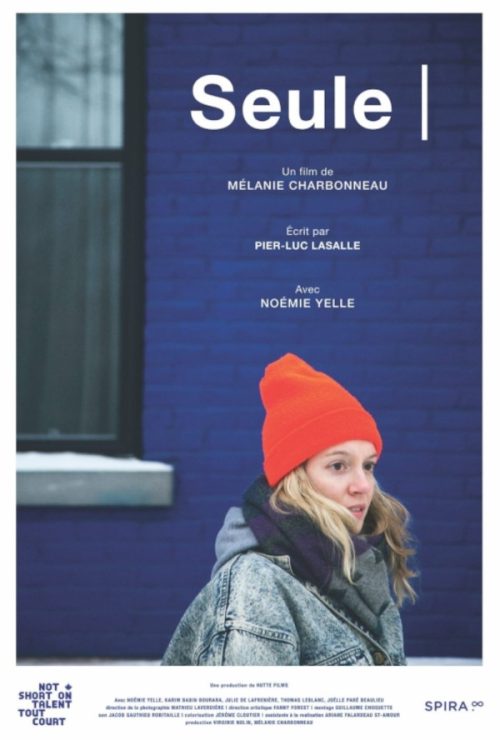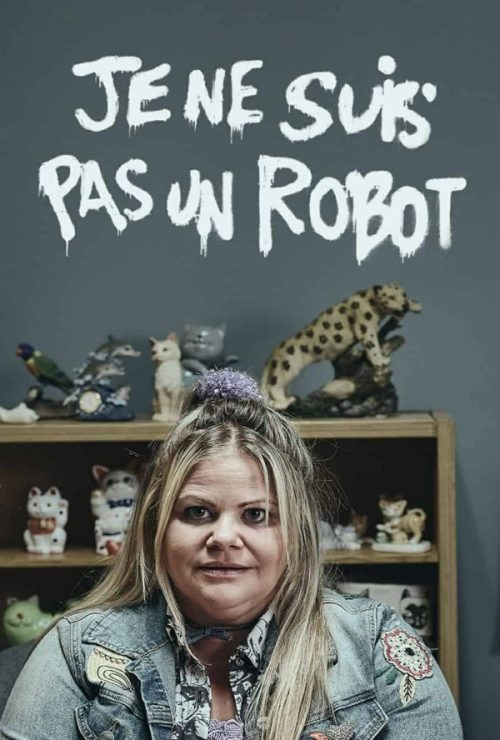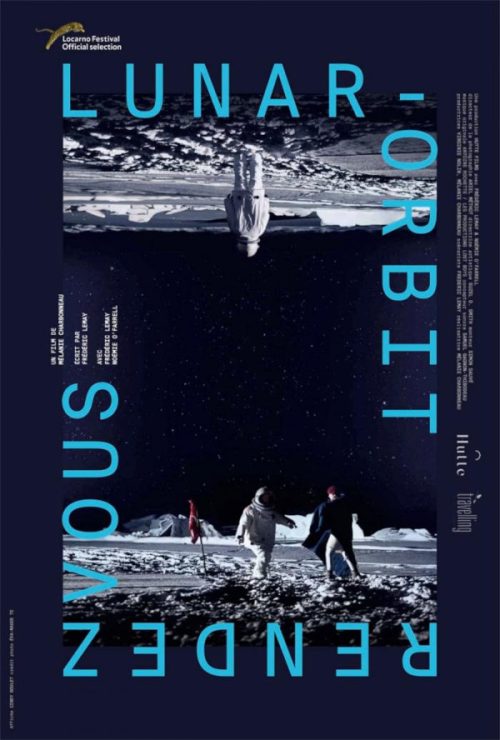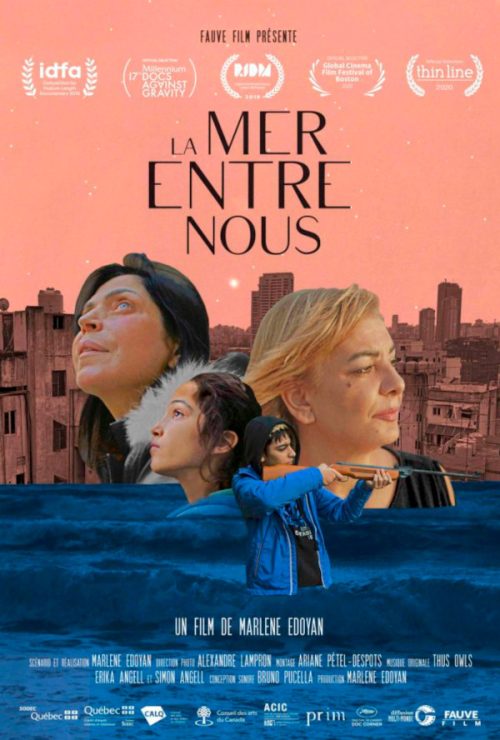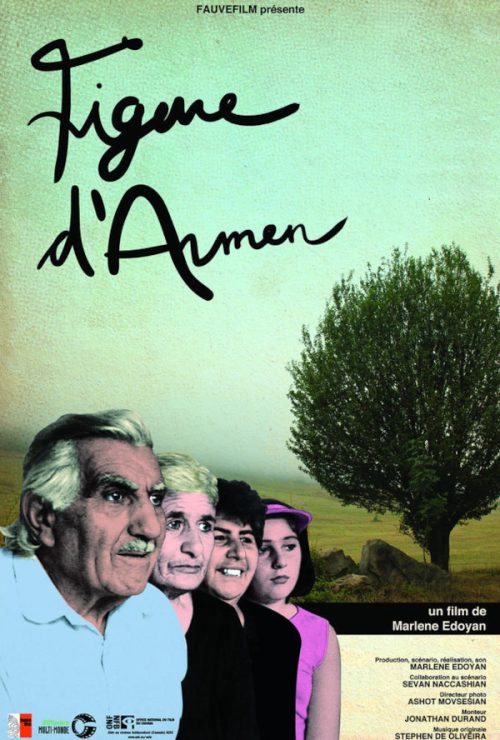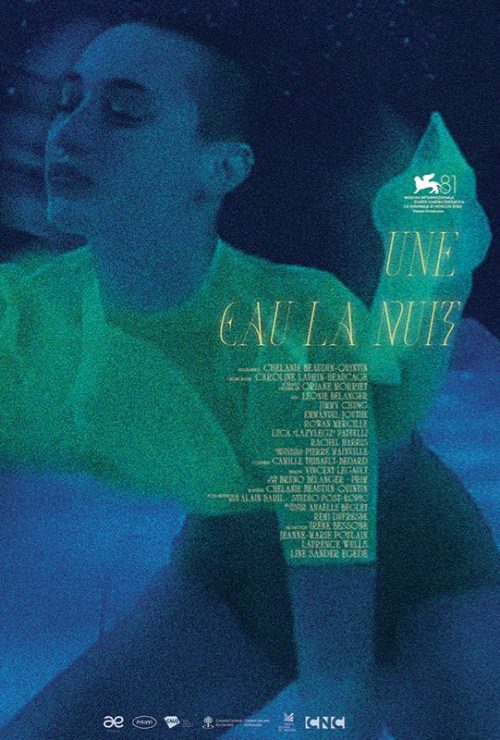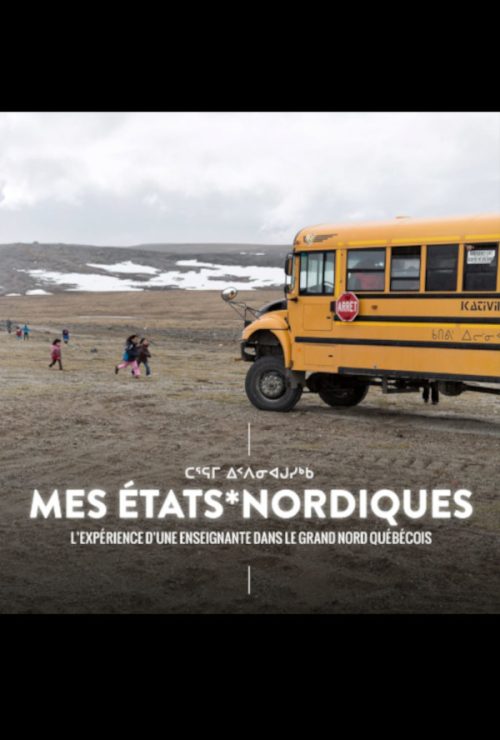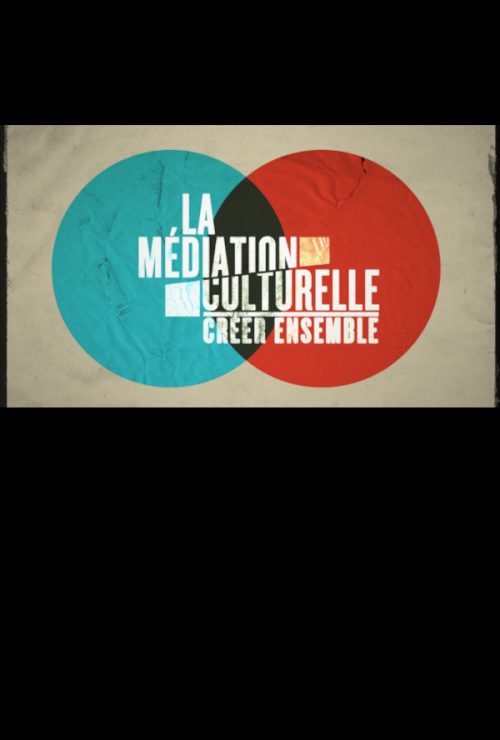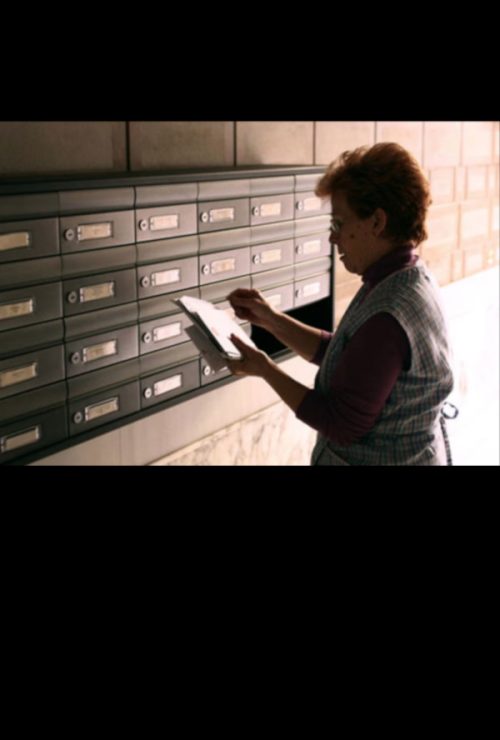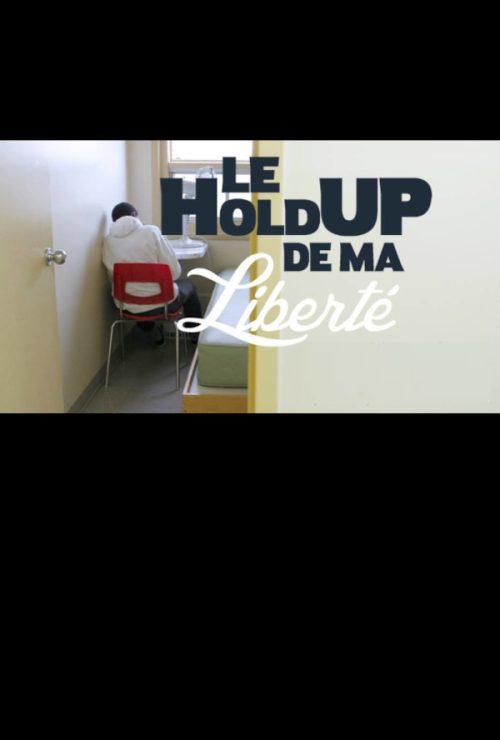Online cinema
Fabuleuses
Mélanie Charbonneau
Laurie is a young journalist working to get established. She lives with her best friend, Élizabeth, a feminist. One day, Laurie meets Clara, an Instagram and YouTube star. The two quickly bond, to Élizabeth’s consternation: she fears her friend is going to change radically. The three young women’s ideals are put to a harsh test. How do you make your way in this topsy-turvy world without betraying your true self? In her first feature, Mélanie Charbonneau tackles that question through the prism of the world of influencers.
Seule
Mélanie Charbonneau
On a grey and windy January day, Annie tries to recover from a horrible break up by organizing her new apartment. She obsesses about restoring her own happiness at any cost.
Je ne suis pas un robot
Mélanie Charbonneau
Marie-Chantal is a naive, childlike woman who works in a web moderation center called Soulshine. Day after day, she takes on the alienating and repetitive task of viewing violent content, nudity, death threats and conspiracy theories on social networks. After one particularly harrowing day, she meets an enigmatic new moderator who seems to have stepped straight out of a 2000s sci-fi movie. She leads her on a wild quest to track down a mysterious kitten killer with viral videos.
Lunar-Orbit Rendezvous
Mélanie Charbonneau
A woman-tampon joins a man-astronaut on a road trip to the moon. Daniel is on a mission to scatter his mother’s ashes and Claude is hoping for her period to make a miraculous return. A modern tale that captures the fever dream of a first voyage to the moon.
La mer entre nous
Marlene Edoyan
The Sea Between Us transports us to the city of Beirut in Lebanon, 25 years after the end of a bloody civil war and into the lives of two strong and charismatic women, Hayat & Wafaa. With children of their own, they must now face the challenging task of passing on the civil war’s violent legacy onto a new generation. The film puts a human face on the impact of sectarian division, nationalism and intolerance and shows that hope for peaceful coexistence is cross cultural, universal and part of the human experience. Through the intimate stories and memories of these two protagonists of different backgrounds, we understand why Beirut’s neighbourhoods still feel walled in by invisible boundaries and why achieving forgiveness and reconciliation is so complex in a country that is still broken over religious and political ideology.
Figure d’Armen
Marlene Edoyan
Drawn to the idea of reconnecting with her ancestral homeland, the filmmaker, Marlene Edoyan embarks on a road trip across the countryside and villages of Armenia and the two Armenian-populated territories of neighbouring Republics of Georgia and Nagorno-Karabakh. These regions play a decisive role in the social, economic and political life of Armenia. Through songs, stories, poems and chance encounters with villagers, the author learns how Armenians living in the South Caucasus are coping with the advent of independence and “democracy”, two decades after the breakup of the USSR. The effects of a devastating earthquake in 1988, followed by a bloody war with Azerbaijan have made the country very fragile. Each story and experience is unique. As we move through the various territories the issues of border tensions, language, ethnicity and cultural heritage become prevalent. Each community has a battle to fight. The recurrent theme throughout the film however remains the same: the challenge of residing and making a living in one’s homeland. While some are hopeful and proud, others are discouraged and bleak about the prospects of a better…
Une eau la nuit
Chélanie Beaudin-Quintin
Bodies Of Water invites you to hold your breath and let yourself be transported and transformed by water in the company of curious individuals. As night falls, they invade a public swimming pool. These bodies of water, immersed in the watery mass, transgress the limits of their natural environment and metamorphose. They then engage in a contemporary dance that reveals them differently. The aquatic environment makes them supple and light, but also vulnerable and combative. This poetic mass, encompassing and suffocating, unites, separates and constitutes them.
À bras-le-corps
Chélanie Beaudin-Quintin
In a street pulsating with the echoes of protests, À bras-le-corps (Going on Strike) tells the story of the birth of an uprising. As chaos gradually takes hold, the mass of protesters generates a vibrant sense of solidarity, merging into a unified body and transforming into a space of emancipation. Through a choreographic score, the film explores the political nature of inhabiting our bodies and spaces, connecting our present struggles to those of the past and the future.
Mes États*nordiques
Marie-Claude Fournier
Every morning for the past two years, Marie-Christine has welcomed her eleven Inuit pupils into her small classroom in Kangirsuk, Nunavik. Marie-Christine is a Qallunaat (or non-Inuit) who has come to teach in the Far North. This week, however, is different: she’s leaving the North for good. Like the majority of teachers who pass through this territory, she returns to the South after two years. Filmed at the dawn of massive exploitation of the territory’s natural resources, the webdocumentary Mes États*nordiques (My Nordic*States) takes us into this changing world through the eyes of the teacher and a few village Inuit.
La médiation culturelle – Créer ensemble
Marie-Claude Fournier
Four 30-minute programs document projects grouped around four themes: Art, education and citizenship; Art and health; Art and work; Art and sustainable change. These include initiatives by choreographer Pierre-Paul Savoie with elementary school children and photographer Caroline Hayeur at a Montreal chamber of commerce, the École nationale d’apprentissage de la marionnette in Saguenay to break the isolation of people with mental health problems, and the Musée de la civilisation in Quebec City for projects with seniors. Culture pour tous, the Université du Québec à Montréal, Canal Savoir and Télé-Québec have joined forces to produce this series of 4 television programs devoted to cultural mediation, an ideal field of action for building bridges between art, culture and society.
La portera
Marie-Claude Fournier
“If I have to clean the stairs, I won’t come back. And that’s what happened… I clean the stairs but I’ve never been back to Monzon.” Palmira is one of Barcelona’s last Porteras. For the past 28 years, she has been plying her trade in a chic building in the Eixample district. In her life, of course, there’s routine, the same gestures, the same jokes, the passage of time, loneliness, but never bitterness. Soon she’ll be out of there like a hermit crab, leaving her old shell behind, with all its dust, to realize her dreams, however simple they may be.
Le hold up de ma liberté
Marie-Claude Fournier
While living in the same HLM, Jay, Jersey and Gerald committed a series of armed robberies that had a serious impact on their teenage life. Now young adults, they show willingness to avoid falling back into the vicious circle of crime. The Hold up of my freedom is the meeting of the three young men with a group of students from their old high school to discuss their history, the obstacles they encountered and share ideas for reflection on their respective experiences. With his sincere and touching testimonies, he draws a realistic and current portrait of youth crime.


